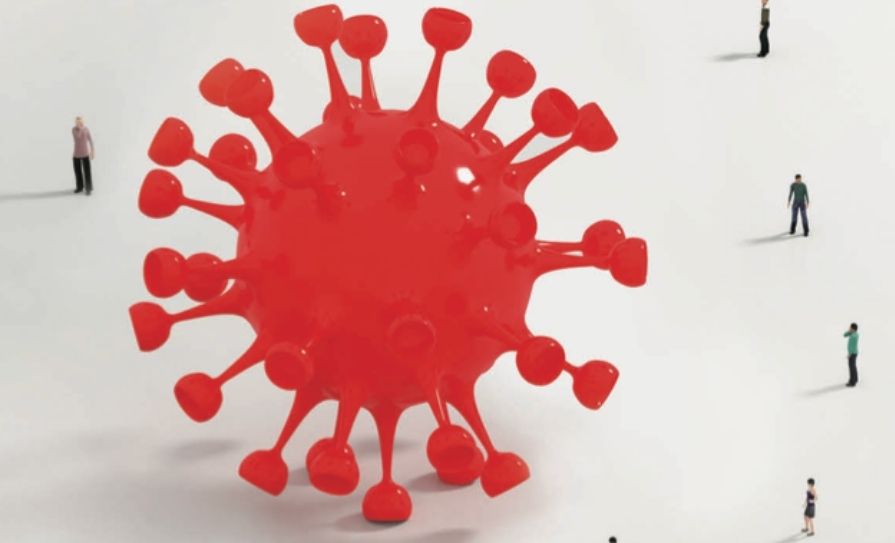Terry Maguire goes viral with a look at the scientific debate over influenza
Ring a ring of roses,
A pocket full of posies,
A-tishoo! A-tishoo!
We all fall down!
Ridiculed scientists
In my school days in Derry, I was more than mildly obsessed with biology and read widely around its theories and the scientists who created them. Back then I felt sympathy for scientists who had a great idea, built it into a grand theory but were then subsequently ridiculed.
Jean-Baptiste Lamarck was one such scientist and where he did a lot of the thinking that helped Darwin and Russell get evolution so spectacularly right, Lamarck, it seemed, largely got it wrong. Animals cannot, and do not, pass on acquired traits to their offspring. The neo-Darwinians held fast on the basis that DNA is largely fixed.
But Lamarck was not completely wrong either and his idea is gaining renewed interest especially in the emerging field of epigenetics. There is some evidence, strongly contested I have to admit, that DNA is indeed changeable through environmental selective pressures and that some of these changes can be passed on. Changing hypotheses is the nature of science and the way it progresses.
Miasma versus germ
Another scientific debate from the mid-19th century, now largely forgotten, was between two capable French scientists, Antoine Bechamp and Louis Pasteur, arguing over the process of infection. Bechamp favoured the long-established Miasma Theory whereas Pasteur favoured the new and emerging Germ Theory. Germ Theory won the day and has been the dominant orthodoxy for over a century since. Microbes, fungi, bacteria, and viruses cause infection and are a main cause of human and animal disease and death. Germ Theory supports human actions – avoid the bug or, if infected, use a magic bullet drug to kill it. The development of antibiotics and more effective vaccines in the 1940s and 1950s copper-fastened Germ Theory and further discredited Miasma Theory. But was it really that black-and-white?
Initially Miasma Theory identified bad smells and putrid air as the cause of infection. The solution was to avoid them if possible or else counter with good smells. Miasma Theory in its simpler form existed long before we knew of microorganisms. In fact, the children’s rhyme above is from the plague of 1666. The “poises” were a vain attempt to freshen the air and counter its infectious nature but they didn’t work and that’s why “we all fall down”. A refined version of Miasma Theory promoted by Bechamp accepted the existence of microorganisms but claimed the environment, not the bugs, was the main cause of infectious disease and that environment could include sanitation and the nutritional status of the individual.
With science supporting Pasteur who was backed by impressive colleagues such as Joseph Lister and Robert Koch, Bechamp’s Miasma Theory never stood a chance. Germ Theory became orthodoxy. Germ Theory explained that an infected person – by coughing, sneezing, or even speaking – would produce infective droplets and infect the surrounding area. It was proposed at the time of the 1918 Spanish Flu that these droplet particles were not airborne but rather fell to the ground, making nearby surfaces infectious if touched. But, according to Germ Theory, all infection ultimately derives from close contact with an infected person.
However, the infection process is rather more complex than that. This was demonstrated in scientific investigations in the 1930s and 1940s which were largely ignored as they did not fit the existing orthodoxy. In her excellent book Expire (2023), UK pathologist Clare Craig outlines how we slowly began to better understand the infection process but failed to dismiss the many public health myths that caused problems right up to the Covid-19 pandemic.
For example, scientists studying influenza in the 1930s showed that flu infections appear in disparate places at the same time. This is impossible unless the flu virus can travel considerable distances in the atmosphere. Physicists working on aerosols in the 1940s in fact proved this but as they were not clinicians their research was not accepted for publication in clinical journals and their findings remained unknown to public health policy makers.
Size matters
It’s important to get an appreciation of the scale of the particle sizes involved. Consider the size of our world and then consider its size compared to a party balloon. There exists the same relative size difference between a party balloon and a virus. That’s how small a virus is – about 100 nano-microns.
A major piece of orthodoxy, adhered to in public health policy well into the last pandemic, was that droplets of five microns (5,000 nano-microns) or greater in diameter could not become airborne. Such particles, according to the orthodoxy, fall rapidly to the ground making surfaces infectious, and it is only by close contact such as touching, or breathing in directly, that infection is spread.
This error occurred, according to Craig, because public health specialists misunderstood research that showed the destiny of different sized particles. Particles of 100 microns or greater indeed fall rapidly to the ground. In the same research it was shown that particles of five microns can impact with the mucosa of the upper and lower respiratory tract; and smaller particles (2.5 microns) will tend to waft up and down in the lungs because they have insufficient mass to impact with the mucosa. The mistake was to think that five micron-sized particles could not become airborne following sneezing, coughing, singing, or talking. This is wrong. Particles of five microns can and do become airborne and can remain so for 16 to 20 hours depending on air conditions, all the while staying infectious. One five micron particle nalone could contain 50 or more Covid-19 or flu viruses.
This misunderstanding meant that many public health policies in the Covid-19 pandemic were likely wrong
Dangerous myths
This misunderstanding meant that many public health policies in the Covid-19 pandemic were likely wrong. A high percentage of Covid-19 viral particles were airborne and accounted for about 30 per cent of all infection. This is why public health had to make a claim early on in the first wave of the pandemic that 30 per cent of infections were from asymptomatic people. This was simply untrue – 30 per cent of infection was coming from airborne droplet particles which public health was claiming to be impossible. It also explains why Track and Trace was so ineffective in controlling the pandemic as very few of the contacts could not be traced. It explains why cloth masks were largely ineffective. It certainly questions the value of social distancing advice and ultimately the legal instruction to stay at home.
Miasma
Antoine Bechamp claimed that when it comes to infection environment is everything. The condition of the nasal mucosa among many other factors is important. This explains why when SARs-CoV-2 was a new virus and experts thought we were all suspectable as we were naive to this virus, it turned out that only about 10 per cent of the population were infected in each wave – not 100 per cent as predicted by the models. Healthy mucosa denied access to respiratory epithelial cells.
Bechamp gave up academia when he lost this fight with Pasteur and went off in a huff to run a pharmacy with his son in Paris – could have been worse, I suppose. But the last laugh may yet lie with Antoine as his Miasma Theory is much more comprehensive and holistic than Germ Theory. Like Lamarck he may yet be rehabilitated as evidence from the Covid-19 pandemic identifies Miasma Theory as a better model of how viral particles circulate and infect.
As for Pasteur himself, later in life he recanted and said: “Bechamp was right. The microbe is nothing. The terrain is everything.”
Terry Maguire owns two pharmacies in Belfast. He is an honorary senior lecturer at the School of Pharmacy, Queen’s University Belfast. His research interests include the contribution of community pharmacy to improving public health.







